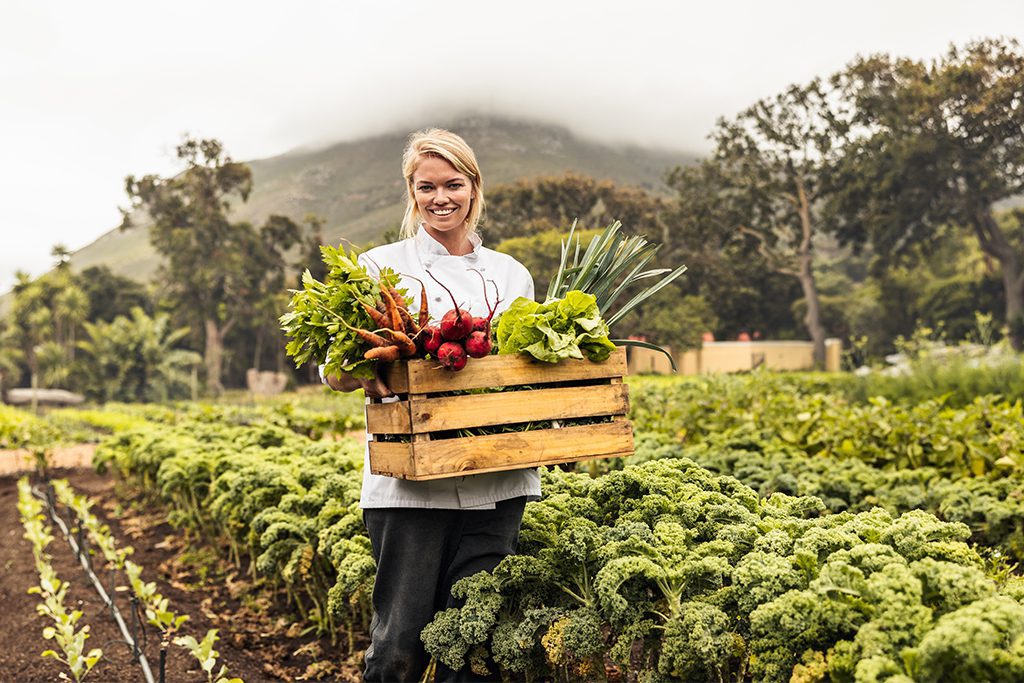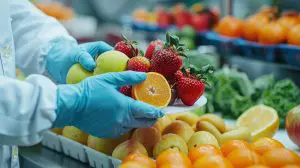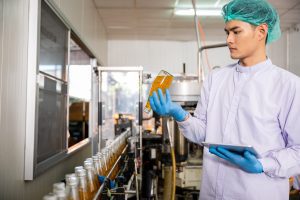Food safety concerns in the produce industry have been in the news thanks to the Netflix documentary – Poison. People started to realize that so many points of cross-contamination can happen from farm to table. If you get the chance to review the food safety recall published by the FDA or CFIA, you will notice that there were recalls of fresh produce almost every month. All of this keeps reminding us, as consumers or as people who work in the food industry, to be conscious and aware of the produce safety is critical. The produce we serve on our dinner table must be from a trustworthy source.
In this article, I will talk about produce safety and break it down from farm to table. I will list a few areas we all need to pay attention to enhance produce safety in our business and daily lives.
Produce Safety at the Farm:
Premise: Have you ever performed an evaluation of your farm? The premises we talk about here include production sites, buildings, and immediate surrounding areas. Potential site hazards include domestic and wild animals, agricultural chemical applications onsite or at a neighbor’s farm, historical site issues (like a dump, gas tank, etc.), or if the farm is in a flooding zone. When considering produce safety, initial evaluation is required to ensure that all biological, physical, and chemical hazards are identified and minimized.
Commercial fertilizers or Manure or Compost Tea:
What’s the difference between the application of commercial fertilizer and Manure?
- Application of commercial fertilizer: Check with your produce safety consultant to ensure the fertilizer used meets the legislative requirements.
- When applying fertilizers, make sure to apply according to the instructions. Who can be considered a produce safety expert for instructions? It will be an agronomist or technical salesperson.
- Application of manure: Be aware of manure type and origin. This is because manure can transmit pathogenic bacteria like salmonella and E. coli O157:H7. Knowing the type or origin will help evaluate and mitigate the risk.
Application of compost tea and other by-products: Make sure the compost tea is produced according to a managed process, not just aged manure. Also, we need to check its type and origin to ensure produce safety. Different from the application of manure, the application of compost tea does not require any pre-harvest interval.
Agricultural chemicals: If we mishandle agricultural chemicals, it can pose a potential produce safety hazard. Make sure you only use agricultural chemicals with pest control product (PCP) numbers that are registered for use in Canada by Health Canada. Keep the signed receipt on file to confirm when the agricultural chemicals were delivered. We must also ensure the labels are intact and follow the instructions for application. Keep records of each application, and only use registered chemicals.
Water used for fluming and cleaning:
If one reviews the past pathogenic outbreaks involving produce, water is identified as a vector of contamination. Testing potable water goes a long way to protect produce safety.
What is considered potable water? According to Guidelines for Canadian Drinking Water Quality – Summary Tables published by CFIA, It means 0 total coliform and 0 E.coli in the water.
Where are we required to use portable water at the Farm level? Below are a few examples:
- Water used for the final rinse.
- Water used for wetting packaging accessories and other items.
- Water used in personal hygiene facilities for hand washing.
- Water used for equipment cleaning.
- Recirculation water if it is used on melons or leafy greens.
- Recirculation water, if it is used on apples /tomatoes/musk/ melons/ cantaloupe and temperature, is being monitored (Research shows that water can be drawn inside of the listed fruits and vegetables.
Product safety at processor/ repacker/ wholesalers:
Sanitary conditions of the line and tools: Have you ever verified if your current sanitation procedure is effective? How do you justify the cleaning frequency? Are you using EPA-approved sanitizer under effective concentration and contact time? Building up a sanitation program for your facility requires a lot to think about. It is worth scheduling an audit with a produce safety consultant to verify the adequacy of your existing programs.
Watch out for condensation: Do you store your products directly underneath the cooling unit? Have you ever noticed the hanging droplet of condensation on your cooling unit? And how often do the cooling units get cleaned? Condensation can be a potential factor of contamination during production storage or handling. When reviewing past produce recalls, Listeria Monocytogenes is often cited as responsible for lack of produce safety. Listeria Monocytogenes, known to survive in a cold and wet environment, can be found in the cooling unit and contaminate the products stored underneath if no proper sanitation program is in place.
GMP and Communicable Disease Policy: Do you have GMP in place to enforce staff to wash their hands and change their gloves during shift change or as frequently as needed? Do you require your staff to wash their hands after the break before heading to the production line? Do you screen your employees or temporary labor to ensure they don’t have any communicable disease, especially the one who handles the products directly?
Above are just a few examples of things that must be looked after in a production facility. Please remember that the consumer might consume the product you just handled without washing it, so we mustn’t bring any contamination into our process. Produce safety is a shared responsibility.
Produce Safety at Consumer:
One of the most common activities among all families during the weekend is to head to the corner grocery store or big retail store for grocery shopping. Like me, I always try to shop for all the items in one store to save me some time or gas. So, what to pay attention to when you shop at a store:
- You may wonder why some retailers provide customers with gloves or sanitizer at the entrance or checkout counter. That’s because consumer likes to handpick their produce in the store, and there might be some microbes on the surface of the produce. If you don’t sanitize your hand properly, you might touch your eyes or hair later, increasing the chance of cross-contamination for foodborne illness, thereby compromising produce safety.
- Try your best to buy healthy and undamaged produce. Use your eye and instinct to help with the evaluation. Rotten produce, especially moldy produce, has a higher chance of harboring harmful bacteria or mold.
- If you have a big party to go to and decide to buy some pre-cut fruits or vegetables. Make sure it is kept refrigerated and it is freshly prepped. Also, keep the pre-cut pack refrigerated before consuming. Food safety concerns on pre-cut fruit packs like pre-cut cantaloupe or melon have been raised in recent years. In June 2018, the Centers for Disease Control and Prevention (CDC) reported a foodborne illness outbreak associated with pre-cut melon in multiple states.
- Make sure to separate the ready-to-eat products from raw products. People always bring one grocery bag for shopping and put the raw meat and vegetables in the same bag. By doing this, you just expose yourself or your family to a higher chance of foodborne illness as chances of the meat juices spilling on the vegetables and fruits are extremely high, especially if you don’t get the produce fully cooked before consuming.
- When you are preparing your food, make sure to handle the raw meat and produce separately. I always have a designated cutting board for my fruits and vegetables. Ensure you wash the fruits and vegetables before peeling, as some germs might grow on their surface.
There is a lot to talk about when it comes to produce safety and good practices from farm to table. Everyone plays a critical role to make sure the produce we have every day is safe to consume. More and more people realize that food and produce safety is all around us; it ensures that we are healthy and our family is healthy. Nothing is more rewarding than seeing our family eating the food and knowing they are safe.
Authored by Helen Xie
References:
CanadaGap Food Safety Manual for Fresh Fruit and Vegetables
https://www.eatright.org/food/planning/smart-shopping/food-shopping-safety-guidelines
https://www.cdc.gov/foodsafety/ten-dangerous-mistakes.html
Sirocco Food + Wine Consulting’s certified SQF Consultants and Lead HACCP/PCQI instructors have been helping food businesses since 2013. We provide food safety plan creation services (HACCP, PC plans for Human Food, Canadian PCP plans) and HACCP/SQF/PCQI training services. If you require assistance with your HACCP plan or SQF program, contact us to request a quote. Subscribe to our newsletter for news on food safety regulations and industry standards.





